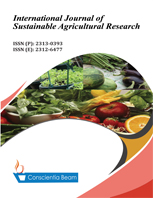Microbial Degradation of Organic Waste through Vermicomposting
DOI:
https://doi.org/10.18488/journal.70/2015.2.2/70.2.45.54Abstract
Every habitation produces a considerable amount of biodegradable waste that is discarded via dumping at various sites, in landfills, being burnt or is dumped in the river systems. Guyana is no exception - the water ways are polluted with plants, grass is constantly mowed from lawns, huge amounts of market refuse on a daily basis – contributes to unsightly land pollution. Vermicomposting is the best solution to getting rid of these biodegradable waste materials. Composting of grass, water hyacinth and a combination of grass with water hyacinth were successful. Final compost yields were at least 30%. This represents a huge decrease in compost volume. Therefore, vermiculture is an efficient method to reduce biodegradable solid waste. By using earthworms, waste is rapidly turned into vermicompost. Vermicompost has higher microorganism content and the activities of microorganisms (Actinomycetes, Azotobacter, Nitrobacter, Nitrosomonas and Aspergillus) is responsible for enhanced plant productivity much more than would be possible from the mere conversion of mineral nutrients into more plant-available forms. Also, during this period, there is a reduction of Gram negative cocci bacteria and corresponding increase in Gram positive bacilli as time progresses towards the maturity of the vermicompost in all three compost samples. This would indicate a healthier finished product that is highly beneficial to plant growth.

